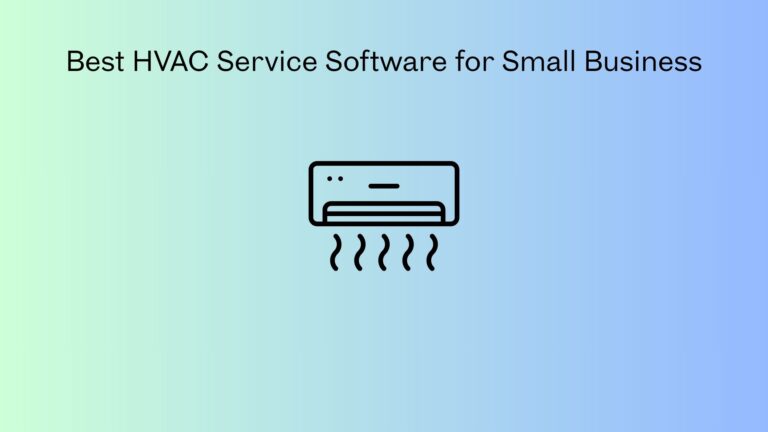6 Best Online Employee Scheduling Software for Workforce Management (2025)
Managing 50+ employees with Excel spreadsheets is like performing surgery with a butter knife – technically possible, but unnecessarily painful. Meanwhile, scheduling conflicts drain $62 billion annually from businesses worldwide, yet most managers still juggle shifts manually. Here’s the reality: online employee scheduling software workforce management systems have evolved beyond simple calendar apps into profit-driving powerhouses.
These 6 solutions transform workforce chaos into streamlined operations while delivering measurable ROI that’ll make your CFO smile.
The Shocking Truth About Manual Scheduling Costs
Managers waste 8+ hours weekly creating schedules that break down within days. That’s 400+ hours annually – equivalent to hiring a part-time employee just to fix scheduling disasters.
Furthermore, labor cost inflation hits harder when schedules are inefficient. Overtime penalties, understaffing during peak hours, and overstaffing during slow periods create a perfect storm of wasted money.
Employee turnover skyrockets when schedules become unpredictable. Workers quit jobs over scheduling conflicts faster than they quit over pay disputes. Additionally, compliance violations from break time errors and overtime miscalculations expose businesses to costly lawsuits.
Consider this case study: A 12-location restaurant chain switched from spreadsheets to automated scheduling and saved $180,000 annually. They reduced scheduling time by 75% while improving employee satisfaction scores by 40%.
The math is simple – manual scheduling costs more than software solutions ever will.
What Matters in Modern Workforce Management Systems
Intelligence That Prevents Problems
AI-powered shift optimization uses historical data to predict optimal staffing levels. Instead of guessing, systems analyze past performance and suggest schedules that maximize productivity while minimizing costs.
Real-time availability tracking prevents the dreaded “double-booked employee” scenario. When someone requests time off, the system automatically flags potential coverage gaps before they become emergencies.
Automated labor cost calculations provide instant budget alerts. Managers see exactly when schedules exceed budget limits, preventing costly surprises on payday.
Employee-Focused Features That Actually Work
Self-service shift swapping reduces manager interruptions by 90%. Employees handle most scheduling adjustments themselves, with managers approving only when necessary.
Mobile-first design acknowledges that frontline workers live on their phones. Clunky desktop interfaces gather dust while mobile apps get daily use.
Push notifications eliminate the “I didn’t know my schedule changed” excuse. Real-time alerts keep everyone informed without constant phone calls or emails.
Analytics That Drive Decisions
Labor cost variance reporting shows exactly where money disappears. Identify which shifts, locations, or departments consistently exceed budgets.
Productivity metrics by shift reveal when teams perform best. Use this data to optimize staffing during peak performance periods.
Compliance tracking prevents violations before they happen. Automatic monitoring of break times, overtime limits, and rest periods protects against legal issues.
Also read: legal billing software sole practitioner
The 6 Best Online Employee Scheduling Software Solutions
1. Deputy – The Frontline Champion
Deputy excels at making complex scheduling feel simple. Built specifically for non-tech managers, it eliminates the learning curve that kills most software implementations.
Perfect for: Retail chains, restaurants, and service businesses managing 50-500 employees across multiple locations.
Game-changing features: Auto-scheduling based on sales forecasts means optimal staffing without guesswork. Integrated time clocks eliminate buddy punching while compliance alerts prevent costly violations.
Investment reality: $4.50 per user monthly with a 31-day free trial that actually lets you test real scenarios.
Why it dominates: Reduces scheduling time by 80% while improving employee satisfaction scores. Managers report getting their weekends back after implementation.
The sales forecasting integration sets Deputy apart. Instead of scheduling based on last week’s patterns, it analyzes seasonal trends, weather impacts, and promotional events to predict actual staffing needs.
2. When I Work – The Communication Specialist
When I Work solves the communication nightmare that plagues most scheduling systems. Team messaging integrates seamlessly with scheduling functions, creating a unified communication hub.
Perfect for: Healthcare facilities, hospitality businesses, and distributed teams where communication breakdowns cost money.
Game-changing features: Built-in messaging eliminates external communication apps. The shift trading marketplace lets employees swap shifts without manager involvement, while attendance tracking provides real-time visibility.
Investment reality: $2.50 per user monthly for core features, with scaling options for growing businesses.
Why it excels: Eliminates 90% of scheduling-related phone calls and texts. Managers spend less time playing telephone operator and more time managing operations.
The shift trading marketplace particularly shines. Employees post available shifts, others claim them, and managers approve with one click. This feature alone saves 5+ hours weekly for most operations.
3. Shiftboard – The Complexity Master
Shiftboard handles scheduling scenarios that break other systems. Multi-location operations with varying skill requirements need sophisticated tools, not simple calendar apps.
Perfect for: Manufacturing plants, security services, and complex operations requiring skills-based scheduling.
Game-changing features: Skills-based scheduling automatically matches qualified employees to appropriate shifts. Certification tracking ensures compliance with industry requirements, while emergency shift filling prevents operational disruptions.
Investment reality: Custom pricing based on complexity, typically ranging from $3-6 per user monthly.
Why it succeeds: Manages intricate scheduling rules without breaking down. Handles union requirements, certification renewals, and multi-skill assignments effortlessly.
The emergency shift filling feature proves invaluable during unexpected absences. The system automatically identifies qualified replacements and sends notifications, often filling shifts within minutes.
4. Humanity (TCP) – The Analytics Powerhouse
Humanity delivers workforce analytics that transform scheduling from reactive to predictive. Data-driven organizations finally get the insights they’ve been craving.
Perfect for: Call centers, hospitals, and data-driven organizations where scheduling decisions impact key metrics.
Game-changing features: Predictive scheduling uses machine learning to optimize future schedules. Labor optimization algorithms balance cost control with service level requirements, while advanced reporting reveals hidden inefficiencies.
Investment reality: $3 per user monthly with enterprise-grade features included.
Why it wins: Increases productivity by 23% through data-driven scheduling decisions. Organizations make smarter staffing choices based on actual performance data rather than gut feelings.
The predictive scheduling algorithm learns from historical patterns, seasonal variations, and business cycles. It suggests optimal schedules before managers even start planning.
5. ZoomShift – The Simplicity Expert
ZoomShift proves that powerful doesn’t require complicated. Clean, distraction-free interfaces let teams focus on work instead of wrestling with software.
Perfect for: Small businesses, startups, and teams under 100 employees who need functionality without complexity.
Game-changing features: Drag-and-drop scheduling makes creating schedules intuitive. Automated shift reminders reduce no-shows, while basic reporting provides essential insights without overwhelming detail.
Investment reality: $2 per user monthly with a generous free plan for small teams.
Why it works: Gets teams operational in under 30 minutes with zero training required. Simplicity doesn’t sacrifice functionality – it enhances it.
The drag-and-drop interface feels natural to anyone who’s used a computer. Creating schedules becomes as easy as organizing desktop icons.
6. Workday HCM – The Enterprise Giant
Workday handles workforce management for organizations where “small” means 1,000+ employees. Enterprise-grade functionality scales effortlessly across global operations.
Perfect for: Large enterprises needing integrated HR and scheduling systems with global capabilities.
Game-changing features: AI-powered workforce planning predicts staffing needs months in advance. Advanced compliance tools handle complex labor laws across multiple jurisdictions, while global multi-language support serves diverse workforces.
Investment reality: Enterprise pricing typically ranges from $10-20 per user monthly, with implementation costs varying by complexity.
Why it scales: Manages everything from 1,000 to 100,000+ employees without performance degradation. Integration with existing HR systems eliminates data silos.
The AI-powered workforce planning feature analyzes business cycles, market trends, and historical data to predict optimal staffing levels quarters in advance.
Industry-Specific Considerations
Healthcare & Senior Care Operations
Healthcare scheduling demands precision that other industries don’t require. Nurse-to-patient ratios, certification tracking, and 24/7 operations create unique challenges.
Online workforce scheduling software must handle specialized compliance requirements automatically. Manual tracking of certifications, training renewals, and specialization requirements becomes impossible at scale.
Integration with patient management systems ensures appropriate staffing levels based on acuity levels and census data. This connection prevents both understaffing emergencies and overstaffing waste.
Retail & Hospitality Dynamics
Seasonal workforce fluctuations require flexible scaling capabilities. Holiday hiring, summer staff increases, and promotional events create scheduling complexity that breaks rigid systems.
Point-of-sale integration enables sales-based scheduling optimization. Instead of guessing staffing needs, systems analyze transaction data to predict optimal coverage levels.
Multi-location management with varying local labor laws demands sophisticated compliance tracking. What works in California might violate Florida regulations.
Manufacturing & Warehousing Requirements
Shift differential calculations and overtime optimization directly impact profitability. Small errors in premium pay calculations multiply across hundreds of employees.
Skills-based assignments for specialized equipment prevent costly mistakes. Only certified forklift operators should handle warehouse equipment, while specialized machinery requires trained technicians.
Safety compliance tracking and reporting protect against OSHA violations. Automatic monitoring of rest periods, break times, and maximum shift lengths prevents accidents and legal issues.
Implementation Strategies That Actually Work
Start with a phased rollout approach rather than a company-wide implementation. Choose one department or location to pilot the system, learn from challenges, and refine processes before expanding.
Identify champions who feel scheduling pain points most acutely. These advocates help drive adoption and provide valuable feedback during implementation.
Additionally, clean existing data before migration. Garbage data creates garbage schedules, regardless of software sophistication. Invest time in data cleanup to ensure successful implementation.
Focus training on managers first, then cascade to employees. Managers need deep system knowledge to troubleshoot issues and train others effectively.
Define success metrics before implementation. Establish baselines for time savings, accuracy improvements, and employee satisfaction to measure ROI objectively.
Cost-Benefit Analysis Framework
Direct savings include reduced administrative time and fewer scheduling errors. Calculate current scheduling costs by multiplying manager hours by hourly rates.
Indirect benefits encompass improved employee satisfaction and retention. Replacing employees costs 50-200% of annual salaries, making retention improvements extremely valuable.
Compliance value prevents costly penalties and legal risks. A single overtime violation lawsuit can cost more than years of software subscriptions.
ROI calculation methodology should include both hard and soft benefits. Most organizations achieve break-even within 3-6 months of implementation.
Future-Proofing Your Investment
AI evolution continues improving demand forecasting accuracy. Machine learning algorithms get smarter over time, providing increasingly accurate scheduling suggestions.
Integration trends point toward deeper connections with business intelligence tools. Scheduling data becomes part of broader operational analytics, driving strategic decisions.
Mobile-first development enhances employee self-service capabilities. Expect continued improvements in mobile functionality as frontline workers demand better tools.
Compliance automation provides automatic updates for changing labor laws. Systems that manually track regulations become obsolete as automated compliance becomes standard.
Making the Right Choice
Company size, industry requirements, and operational complexity determine optimal solutions. Small businesses need simplicity, while enterprises require sophisticated features.
Free trial strategies should focus on testing real scenarios rather than basic features. Use trials to evaluate system performance under actual workload conditions.
Vendor evaluation criteria extend beyond price and features. Consider implementation support, training resources, and long-term development roadmaps.
Change management considerations often determine success more than software capabilities. The best system fails without proper user adoption and ongoing support.
Online employee scheduling software workforce management systems deliver measurable value when matched correctly to organizational needs. Start with clear requirements, test thoroughly, and choose solutions that grow with your business rather than limiting it.







